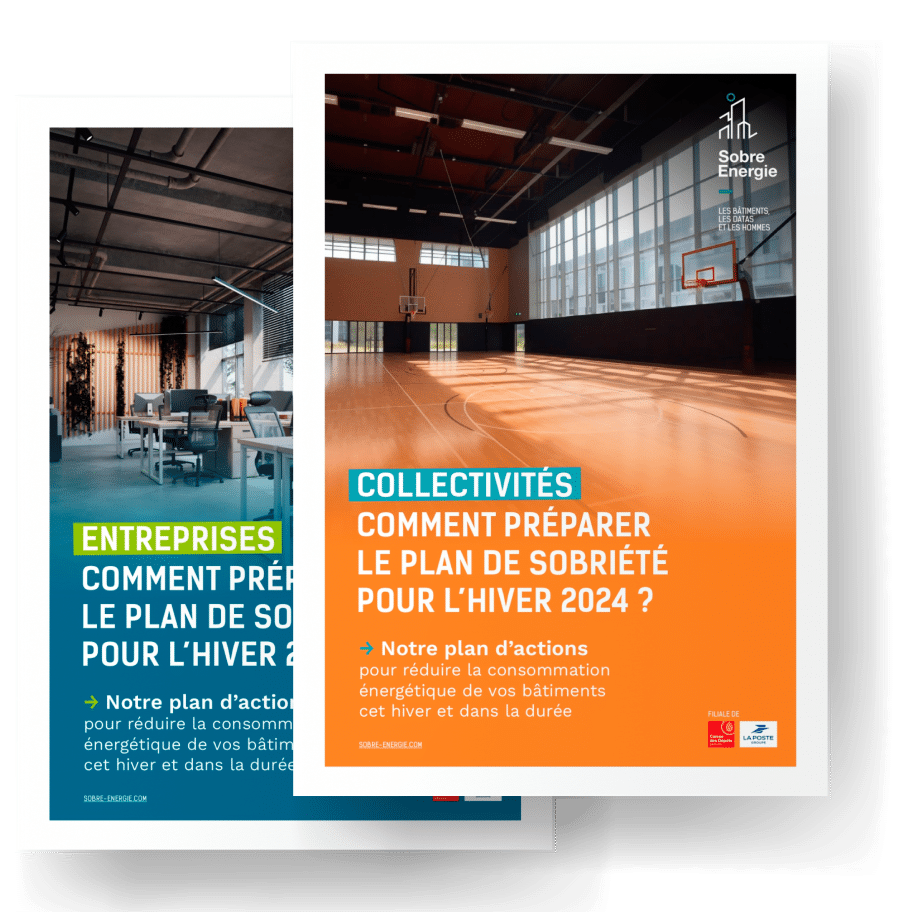“It is possible to begin a coherent process of sobriety in 3 months”
At the start of winter, businesses and communities were looking at their Sobriety Plan for the second year in a row.
For Jonas Jaffon, Energy Manager, they remain too poorly prepared but in a few weeks the first impactful actions can be put in place.
Hello Jonas, can you explain your role to us at Sobre Energie? What does the daily life of an Energy Manager consist of?
At Sobre Energie, we help businesses and communities reduce consumption and the impact of buildings through a critical analysis of their data.
We therefore cover a wide typology of buildings: office buildings, logistics warehouses and even industrial hangars on the business side. For communities, this could be concert halls, museums, gymnasiums for example.
Personally, my role consists of analyzing consumption characteristics, visiting buildings and examining equipment to detect potential savings. Then, I make recommendations to organize the energy strategy and guide actions and investments.
Does everyone know what the Sobriety Plan is? Have businesses and communities prepared for this winter?
It is true that there is renewed motivation for the subject of the Sobriety Plan since the surge in prices and the tensions linked to the Ukrainian conflict.
Companies and communities understand the triple benefit of a Sobriety Plan: saving money, promoting their CSR policy internally and externally, and participating in the national sovereignty effort.
“Why did we consume 10% less in 2022-2023? Is it thanks to our efforts or because the winter was milder? »
But we realize when we meet them that the subject is still only discussed on the surface. Many are not equipped to collect data and those who have information do not have the skills to translate it in a relevant way.
For example, climatic severity was very little integrated into the analysis of last winter. Why did we consume 10% less in 2022-2023? Is it thanks to our efforts or because the winter was milder?
In fact, we had a winter 10% milder than the previous one and even the government was evasive on this subject. For 2023-2024, watch out for the cold shower.
What are your customers' concerns as winter approaches: their bills, shortages, compliance?
Many believe that just as last winter went well when it was supposed to be terrible, the coming winter should pass smoothly as well. But it's not that simple.
This year, the risk of shortage is lower but it is the bill that can cause damage.
It is also on heating that we must focus our efforts. It alone represents 50% of the energy bill for buildings. This is a lever that is difficult to activate if users are not made aware, but it will have to be put on the table. What's actually scary is having to force yourself to be cold.
Is it possible to put things in place that work in 3 months? Or is it too late?
The persistence of high prices remains probable throughout 2024, with determining elements such as:
- the progressive obsolescence of the French nuclear fleet
- the planned end of the ARENH by 2026
- the growth in energy demand, stimulated by the electrification of uses
Faced with high price forecasts for 2024-2030, industrial companies are investing massively (29% in 2022) in energy efficiency:
An approach that is all the more crucial in the context of regulatory compliance with the tertiary decree, encouraging tertiary buildings to align with energy efficiency standards.
What advice would you give to a company that has not yet started the process of sobriety? Where to start a few months before winter?
Beyond “easy” actions to raise awareness and reduce heating, it is possible to begin a coherent approach to sobriety in 3 months.
- You must first collect data, with a dedicated platform for example, to know where you are and measure the impact of your actions.
- Then, sensors and control elements are installed to better manage operations (setpoints, reduced temperatures when the building is empty, lighting schedules, etc.).
- Finally, we can make small investments with immediate impact, such as equipping radiators with thermostatic heads, LEDs or blinds.
“By installing sensors, what we most often observe is that the actual temperatures observed have nothing to do with what is predicted. »
The BA to BA is having the right information to act. We often meet companies who think they have data, exploit it and control it. But by putting sensors, what we most often observe is that the actual temperatures observed have nothing to do with what is predicted.
The thermostat is set to 20°C during the day and 17°C in the evening, but temperatures of 22 to 23°C are measured during the day. We must therefore challenge what exists.
What goals are realistic when starting from scratch?
By getting started in September and with good organization, we can hope for 10% energy savings. This is what we observe at Sobre on average over a fleet, taking into account the harsh climate. Let's say 10% for good students and 5% for those who have more inertia.
Is sobriety profitable? How long do your customers get a return on their investment?
Some of our advice will have immediate effects from the first winter (awareness-raising actions) and others will be lasting for future winters (installation of the platform, installation of sensors, etc.).
For these long-term investments, the ROI is achieved over 4 years on average. That is to say that a mission carried out this winter will be profitable after four winters.
But the sobriety plan is only the first milestone, it should not be taken individually. Once the platform is in place, new actions to reduce consumption can be implemented easily and at lower cost!
